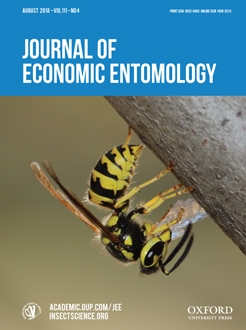The widespread use of neonicotinoid insecticides has sparked concern over the toxicity risk to honey bees (Apis mellifera L. (Hymenoptera: Apidae)). In this study, feeding treatments with the clothianidin formulation at 2.6 ppb (residue concentration) or its binary mixtures with five representative pesticides (classes) did not influence on adult survivorship, but all treatments caused significantly lower body weight than controls. Most binary mixtures at residue levels showed minor or no interaction on body weight loss, and synergistic interaction was detected only from the mixture of clothianidin + λ-cyhalothrin. Chlorpyrifos alone and the mixture of clothianidin + chlorpyrifos significantly suppressed esterase (EST) activity, while most treatments of individual pesticides and mixtures had no effect on EST and glutathione S-transferase (GST) activities. However, ingestion of clothianidin at 2.6 ppb significantly enhanced P450 oxidase activity by 19%.The LC50 of formulated clothianidin was estimated at 0.53 ppm active ingredient, which is equivalent to 25.4 ng clothianidin per bee (LD50) based on the average sugar consumption of 24 μl per bee per day. In addition to mortality, ingestion of clothianidin at LC50 significantly reduced bee body weight by 12%. P450 activities were also significantly induced at 24 and 48 h in clothianidin-treated bees, while no significant difference was found in GST and EST activities. Further examinations revealed that the expression of an important CYP9q1 detoxification gene was significantly induced by clothianidin. Thus, data consistently indicated that P450s were involved in clothianidin detoxification in honey bees. Although the honey bee population in Stoneville (MS, United States) had sixfold lower susceptibility than other reported populations, clothianidin had very high oral toxicity to bees.
How to translate text using browser tools
8 June 2018
Responses of Honey Bees to Lethal and Sublethal Doses of Formulated Clothianidin Alone and Mixtures
Jianxiu Yao,
Yu Cheng Zhu,
John Adamczyk
ACCESS THE FULL ARTICLE
It is not available for individual sale.
This article is only available to subscribers.
It is not available for individual sale.
It is not available for individual sale.

Journal of Economic Entomology
Vol. 111 • No. 4
August 2018
Vol. 111 • No. 4
August 2018
Binary mixture
clothianidin
cytochrome P450
esterase
honey bee




